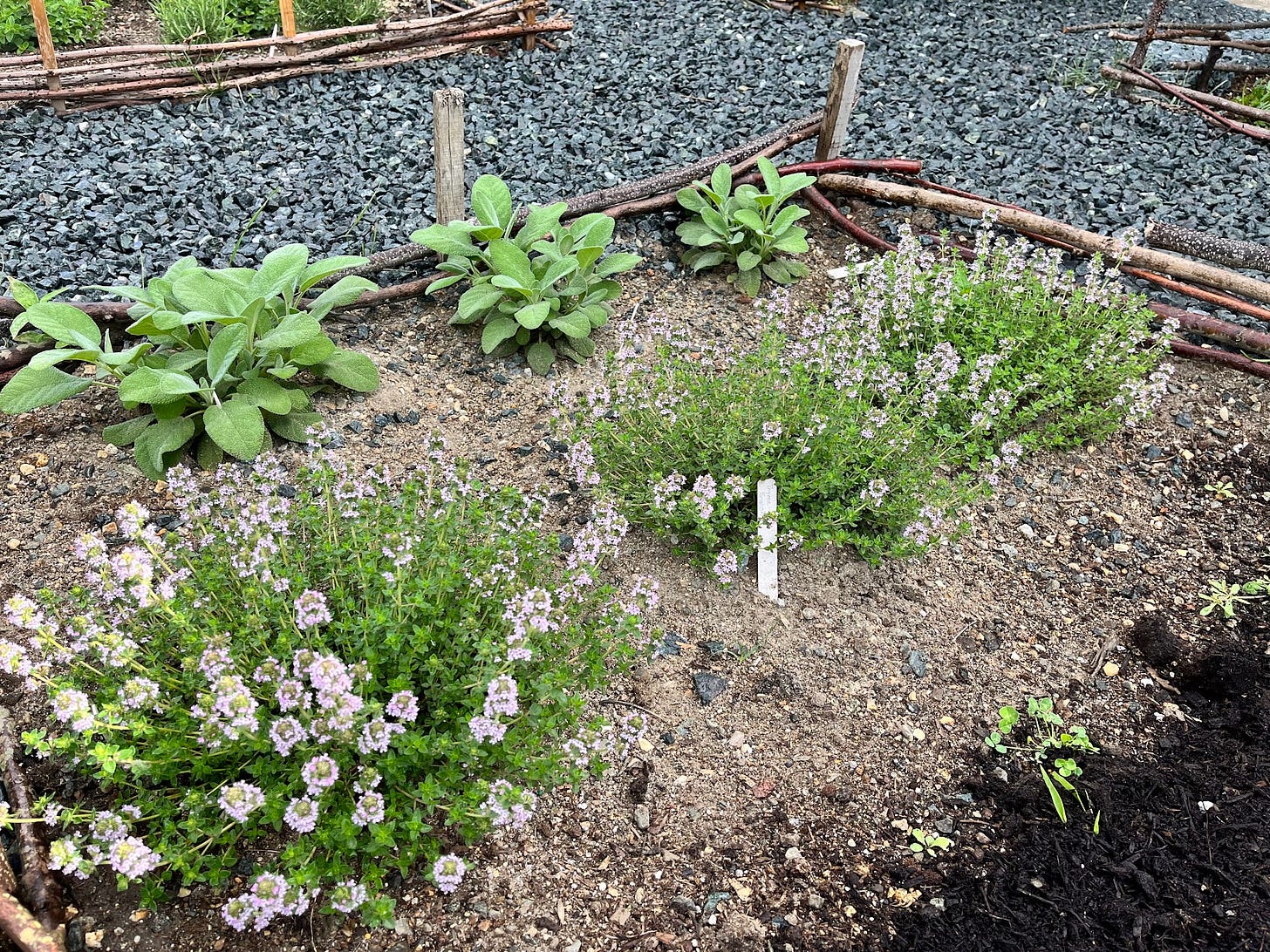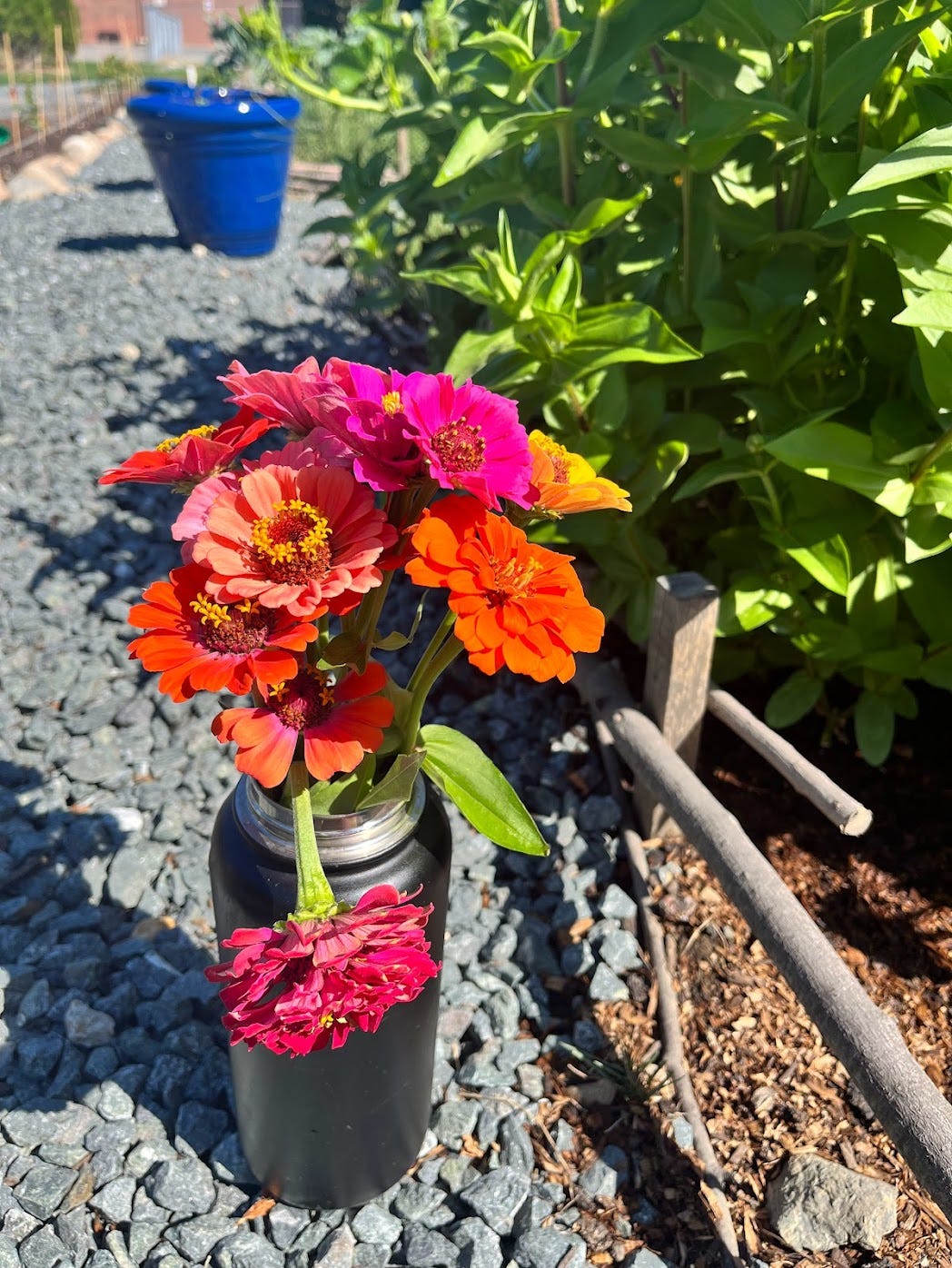There is a strange give and take to a garden’s relationship with the landscape and ecology that surround it. Most people who make a brand new vegetable garden begin with tomato plants: a good choice since a tomato starts to taste less and less like itself from the instant you take it off the vine. A fresh tomato is the wonder and privilege of the home gardener, a marker of summer and a feast that will spoil store-bought tomatoes for you forever. (Incidentally, though if you really want the most bang for your buck, you should get your gardening feet wet by planting some herbs, which will both taste delicious and save you a fortune at the grocery store).
But when you try to repeat that pleasure by planting tomatoes in the same space every year, a law of diminishing returns kicks into effect. Since each kind of plant takes certain nutrients from the soil, and since the sicknesses that plague them tend to lie dormant overwinter in the dirt where last year’s crop was located, planting the same species in the same spot over and over again will cause future crops to be more feeble, more starved, and more prone to disease. Eventually, the tomatoes might cease to yield anything at all.
Yet if you switch where you plant what you plant, you foster a magical exchange by which the nutrients taken out by one group of veggies are replaced by the next because, of course, plants do not only suck things from the ground. As living and digesting organisms, they also leave things behind. So, if you rotate your crops by planting legumes, brassicas, and root vegetables in sequence, you perpetuate a loop of positive nutrition that will keep everything green and flourishing.
Add some homemade organic compost to the mix as mulch and your soil will actually increase in health rather than dying out. Once we become aware of the wisdom that stands behind this ancient practice, it is not hard to see why the huge industrial farming complexes that only grow monocultures of corn, tobacco, or wheat year after year have to rely on chemical fertilizers to keep things going. The trick, of course, is that we end up ingesting some of these chemicals when we consume the crops. Much better to grow our own corn if we can.
Of course, most of us do not only plant corn or even tomatoes in every square foot of our home gardens. We crave variety. We want to try new things. Thus the plantings of gardens are often as much the product of human curiosity as they are of the human need for sustenance, which is perhaps why I grew “Orient Express” eggplants for years even though I can’t stand the taste of eggplant. I just liked the look of the things, with their sleek, glossy skin the color of an October sunset. And this impulse should absolutely be honored because monoculture is as deadly to the gardener’s morale as it is to the soil itself.
The Classical Roots veg garden is no exception. If you wandered by it this week you could find old standards like “Bright Lights” Swiss Chard and Arugula “Roquette” growing there. But, scanning the beds a little more closely, you’d also see some unusual specimens like white beets or the freakishly tough rosemary “Hill’s Hardy.” Perhaps most importantly, you’d discover ornamental flowers that might not seem to have any business in a vegetable garden at all, like French Marigolds and some purple catmint we split off from decorative borders elsewhere in the school.
Yet marigolds, apart from adding some fiery color to the edges of the beds all summer, also happen to repel tomato worms. And catmint draws pollinating bees into the garden in droves, assuring that the squash and peppers will bear their fruit in due time. Satisfyingly, when I first told our students that we’d be growing flowers in the vegetable garden, they didn’t question it all. In fact, the first feedback I got was from a 12th-grade girl who said simply: “Oh good. I was just thinking we needed a little color.” There is ancient wisdom latent in the common craving we all feel to “brighten up” a food garden with a few flowers here and there. When that impulse strikes, we shouldn’t resist it. Doing so would starve both our imaginations and the soil.





